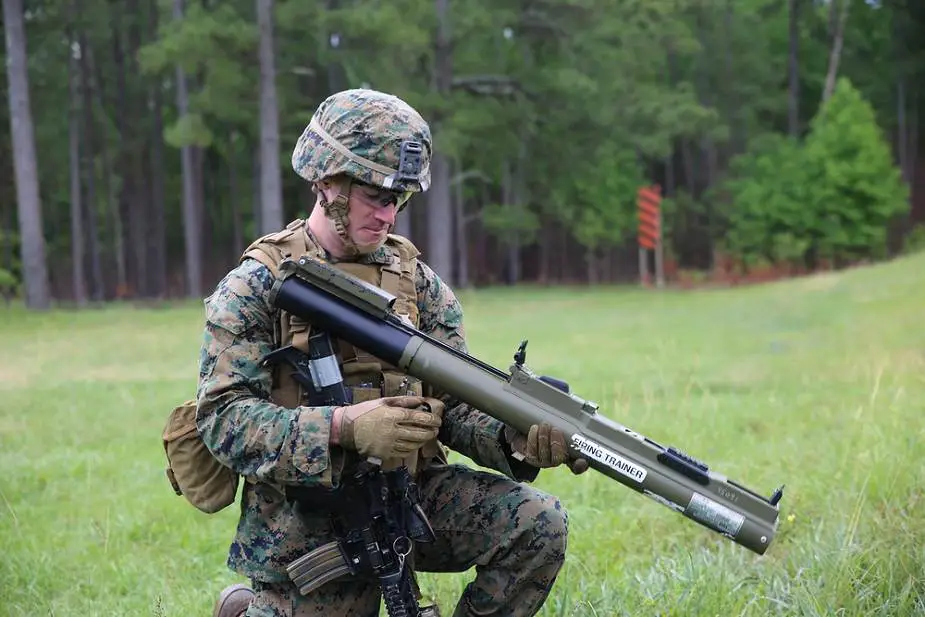Breaking news
Belgium offers 5,000 FNC assault rifles and 200 M72 LAW anti-tank weapons to Ukraine.
Ukraine will receive 3,000 assault rifles and 200 anti-tank weapons from Belgium, Ukrainian President Volodymyr Zelenskiy wrote in a tweet on Sunday, February 27, following the official announcement made on Friday, February 25, from Estonia by Belgian Prime Minister Alexander De Croo.
Follow Army Recognition on Google News at this link

Belgian soldier armed with an FNC 5.56mm assault rifle manufactured by FN Herstal. (Picture source Army Recognition)
In a first move, Belgium announced it was offering 2,000 « machine guns », an inappropriate designation as the country does not have that many machine guns (be it FN MAG, FN Minimi or Browning M2 HMGs) to offer. But as the army has been decommissioning its FNC assault rifles in favor of the FN SCAR, it is not yet clear whether it will be 3,000 or 5,000 (the last figure mentioned) FNCs that will be donated to Ukraine, instead of destroying them. An undisclosed amount of 5.56mm rounds will also be donated, as this caliber is not in use in the Ukrainian army, which would otherwise render the FNCs unusable.
On top of these weapons, Belgium is also donating 200 anti-tank weapons. In spite of the fact that no detail is given, we reasonably assume that they can only be M72 LAWs, as they are the only anti-tank weapon Belgium can donate. A major advantage presented by the LAW is that it is very easy to use, almost like the German Panzerfaust of World War 2.
FNC (FN Carbine)
The FNC (French: Fabrique Nationale Carabine) is a 5.56×45mm NATO assault rifle developed by the Belgian arms manufacturer FN Herstal between 1975 and 1977 for NATO standardization trials, as a less expensive alternative to the M16 rifle. The rifle’s design is based on the FNC 76 prototype, which itself originated from the commercially unsuccessful FN CAL rifle (CAL stands for Carabine Automatique Légère, Light Automatic Carbine) This prototype was soon withdrawn from the NATO competition after performing poorly due to its rushed development.
The first state to adopt the FNC was Indonesia, which purchased approximately 10,000 rifles in 1982 for its air force. The Indonesian government later acquired a license to permit Indonesian firm PT Pindad to manufacture the rifle for all branches of the armed forces, as the Pindad SS1 and Pindad SS2.
Trials for the Swedish Armed Forces were held between 1981–1982, using updated prototypes that proved the utility and efficiency of the design, impressing both the Swedish military and Belgian Army staff back at home. Sweden adopted a version of the FNC for domestic production in 1986, naming it the Ak 5. Slightly modified, it remains the main service rifle of the Swedish Armed Forces.
The FNC was finally adopted by the Belgian Armed Forces in 1989, as a service-wide replacement for the 7.62×51mm NATO FN FAL, after having been issued in small numbers to airborne infantry units for several years. The FNC is now being replaced by various models of FN SCAR.

A U.S. Marine readies an M72 light anti-armor weapon during a fire team training exercise at Camp Lejeune, N.C. (Picture source U.S. DoD)
M72 LAW (Light Anit-tank Weapon)
Belgium is also sending 200 LAWs (Light Anti-tank Weapon). The M72 LAW (Light Anti-Tank Weapon, also referred to as the Light Anti-Armor Weapon or LAW as well as LAWS: Light Anti-Armor Weapons System) is a portable one-shot 66-mm unguided anti-tank weapon. The solid rocket propulsion unit was developed in the newly formed Rohm and Haas research laboratory at Redstone Arsenal in 1959, then the full system was designed by Paul V. Choate, Charles B. Weeks, Frank A. Spinale, et al. at the Hesse-Eastern Division of Norris Thermadore. American production of the weapon began by Hesse-Eastern in 1963, and was terminated by 1983; currently, it is produced by Nammo Raufoss AS in Norway and their subsidiary Nammo Talley, Inc. in Arizona.
In early 1963, the M72 LAW was adopted by the U.S. Army and U.S. Marine Corps as their primary individual infantry anti-tank weapon, replacing the M31 HEAT rifle grenade and the M20A1 "Super Bazooka" in the U.S. Army. It was subsequently adopted by the U.S. Air Force to serve in an anti-emplacement/anti-armor role in Air Base Defense duties. It was bought by plenty of allied armies, namely Belgium.
In the early 1980s, the M72 was slated to be replaced by the FGR-17 Viper. However, this program was canceled by Congress and the M136 AT4 was adopted instead. At that time, its nearest equivalents were the Swedish Pskott m/68 (Miniman) and the French SARPAC.


























